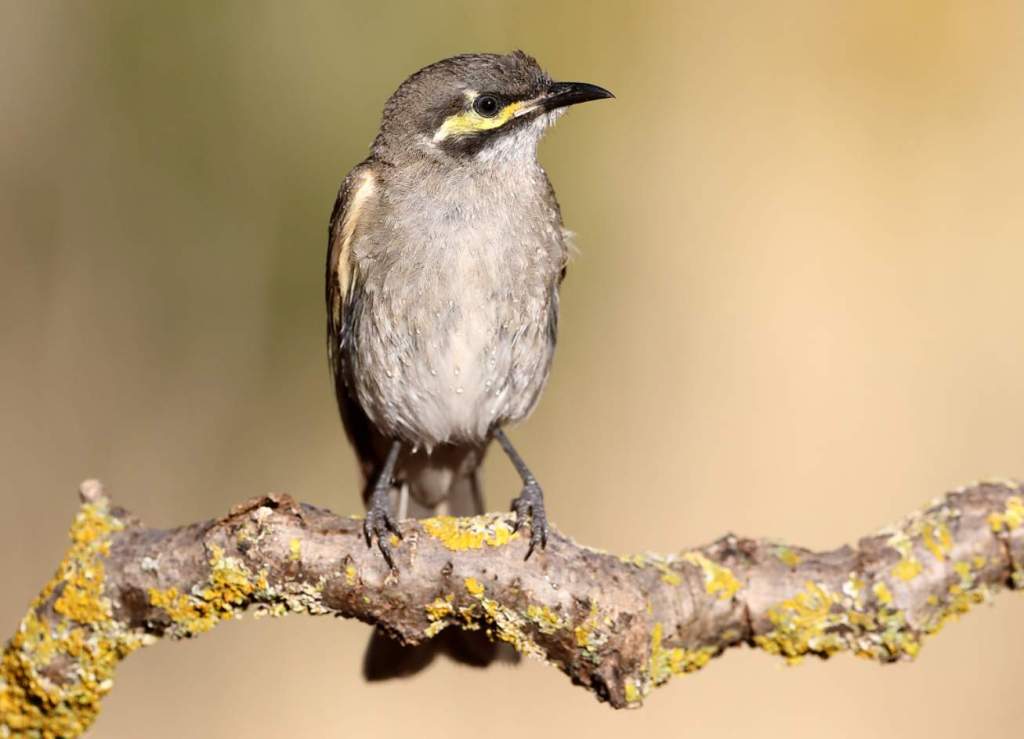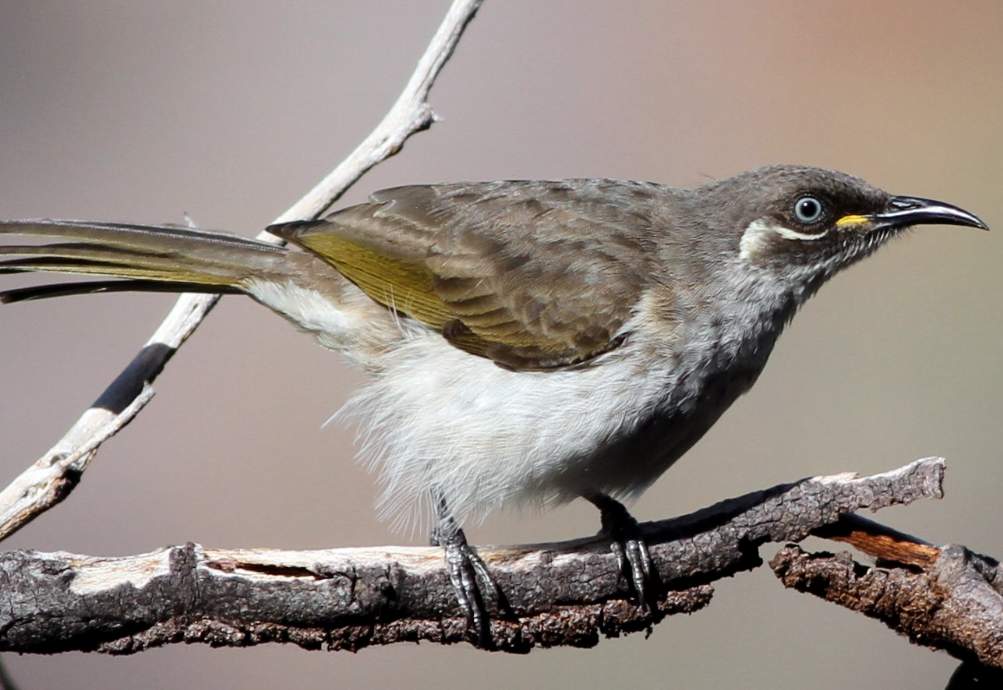Family: The gorgeous white-throated gerygone (Gerygone olivacea) belongs to the family Acanthizidae in the order Passeriformes.
Vocalizations: White-throated Gerygone infrequently shortened, softened sounds, in contact by both sexes. The song consists of a series of long, reeling trills of quick, sweet whistled notes, first rising briefly, then cascading chromatically down and up the scale. Also, the songs of the northern races are more abbreviated than those of the east.
Habitat: The white-throated gerygone’s rippling cadences, which appear every spring, signal the bird’s arrival to breed in the southernmost regions of its habitat. At other times, it is quiet and solitary, keeping to the upper leafy branches of trees in eucalypt woodlands and open forests, where it lives and forages when feeding. At that time, white-throated gerygone moves singly, in pairs or, occasionally, in family groups, through the outer foliage, gleaning insects along stems or under leaves. They will often hover over trees to capture the insects they have disturbed.
Races: There are three races, all of them found in Australia. Gerygone olivacea, which occurs throughout eastern Australia,. It is deep olive-toned on the back and has a distinctly white-tipped and based tail. It migrates southwards in spring, occasionally straggling to southeastern South Australia and the Mt. Lofty ranges near Adelaide.
Moreover, there are two other races, both smaller birds. In the northwest, as far east as the Gulf of Carpentaria, G. o. rogersi is grayer on the back and has indistinct white tips and bases to the tail feathers; G. o. lavigaster, which lives on Cape York Peninsula, is also pale but has distinct white tins on the tail feathers.
Identification: The adult sexes are alike. The head and upper surface are mid-ash-grey, sometimes faintly tinged olive, with a distinct white spot on either side of the forehead. The wings are like the back but the flight feathers are darker grey-brown edged ash-grey. The tail is grey-brown, with a broad to faint white band at the base. Also, there is a broad black band near the tip and a white spot at the inner tip of all feathers except the central pair. The throat is pure white, and the breast and belly are rich yellow. The eyes are rich red. The bill is black. The feet are black to slate. The immature bird is like an adult’s but its throat is pale yellow, like its breast and belly. The forehead spots are reduced or absent. The eyes are brown, and the bill is dark brown. The feet are grey.
Behavior: During the breeding season, males advertise their territory with day-long musical songs. Males are naturally helpful to the female in constructing the nest but they spend more time singing near the nest while she is brooding. Nest building takes 10–14 days. Both the male and, to a lesser extent, the female display about the nest site, bowing and spreading their tails. They may mate permanently, at least in the north of their range, where they appear to be rather sedentary. The female does most, if not all, of the incubation, but both parents feed the young, producing one or two broods per season. The Golden and Horsfield’s Bronze Cuckoos both lay their eggs in the nests of white-throated gerygones. The White-throated is the only regular migrant among Australian gerygones but it seems that only one race is involved.
Nesting and Breeding: White-throated Gerygone nesting and breeding occur in mainly August–January; more spread in northern Australia. Nest is an oblong-oval to the pear-shaped dome, with a slender tail 100–150 mm long and a shortly projecting side-entrance hood. The nest is made of strips and shreds of bark closely matted and bound with cobweb, lined with down, feathers, or both, and slung from a stem among outer leafy branchlets 3–15 meters above ground.
Eggs: The bird lays three, sometimes two; matt white to pink, speckled and spotted with dull red, red-brown, and purple-red, often forming a zone at the larger end; oval, about 18 x 13 mm. The incubation period is about 12–13 days, mostly by the female. Young fledge in about 10–12 days.
Distribution: White-throated Gerygone is widespread in taller, open eucalypt woodlands around the northern and eastern mainland. Southern migration straggles occasionally southwest to southeastern South Australia but is rare west of Melbourne in winter. Also found in southeastern Papua New Guinea.
Alternative Names: It is also known as White-throated Warbler, White-throated Flyeater, Bush Canary, or Native Canary.
Size: White-throated Gerygone measures about 100–110 mm in length.








